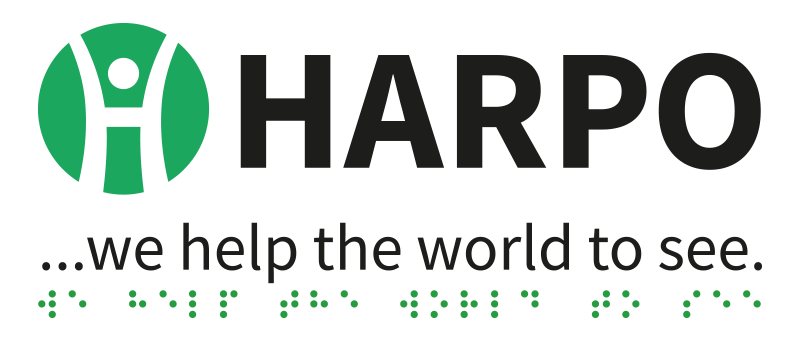Where else are Mountbatten Braillers being used?
The Mountbatten Brailler was released in 1991. There are over 5,000 units in use around the world fulfilling a wide range of applications. However, the predominant role is in education. Within education the usage is pretty evenly split between use as a Braille writer, and use as a resource tool for the VI teacher or the paraprofessional (teachers aide). In areas where the MB has been in continuous use the greater role is usage as a Braille writer.
Do children develop their hand and finger coordination as well as their finger strength as quickly when being introduced only to the Mountbatten compared to using the Perkins Brailler first?
The Mountbatten is often considered for a particular student simply because the keyboard is ergonomic and much easier to press. It helps to strengthen wrists and fingers, without the risk of wrist or hand strain that can be caused by the pressure required on the Perkins. Students can definitely use the Mountbatten keyboard for longer periods without strain or stress.
It has been well established that the use of manual Braille writers can result in strain injuries. With adults this is evidenced as repetitive strain injuries amongst VI teachers and teachers aides. With children the main problems are hyper-extension or hyper-flexion of the fingers and wrists, which don’t always pose health risks till later in life. Probably the biggest problem though is that the lack of finger strength to press a Perkins slows down the Braille learning progress. Which is more important, Braille learning or finger strength? This linking of physical strength to educational opportunity is a serious disadvantage for young blind children.
It is surprising that the ergonomics of Braille writing have achieved such a low profile. Within wider education we place great emphasis on ergonomics, for example with desks and chairs, and the use of backpacks for posture.
Is there data that says starting out with one (such as the Perkins) is better than the other?
There is much anecdotal evidence that students who are introduced to the Mountbatten before the Perkins are more motivated to learn and more excited about Braille in general. Because they produce better Braille their reading is also enhanced. As can be seen in the quote below it is also important in linking Braille and technology from the earliest possible age.
„I’d love to see the students with Mountbattens at the beginning of Kindergarten, so they would be ready for the technology to be part of their academic learning as soon as they enter Grade 1.”
Pat Gould – VI Teacher
Odyssey 2001
Is the Perkins outdated and are you recommending using only the Mountbatten in the future, or should both be used simultaneously? Is the Perkins Brailler still to be considered as the 'pen and paper’ and therefore all students/clients should still have the Perkins?
Is the Perkins out-dated?
It is hard to criticise the Perkins without appearing disrespectful. The Perkins has provided incredible service over the years. However, we need to analyse the reasons it is still being used and these often include statements like;
- It is very durable and reliable.
- Everybody knows how to use it.
- There is less likely to go wrong with it.
- It was fine in my day, so why change.
If we apply these same statements to any other technology from 1950 it is clear that society has moved on and we don’t accept these reasons for inhibiting innovation. Our expectations have changed and our needs have changed.
Possibly the rationale for using the Perkins has more to do with a lack of perceived alternatives than really choosing it as the best possible tool for blind students today.
Use Both Simultaneously?
It is essential that students continue to learn the Perkins as it is an additional skill to add to their “toolbox”. The issue is really about increasing choices and options, not using any one device exclusively.
Pen and Paper Equivalence?
Many people have come to regard the Perkins as the pen and paper equivalent by default, not because it really bears any similarity to a pen and paper, but because there has been a lack of alternatives. If the sighted world depended on a pen and paper the size and weight of a Perkins how long would it take to get a better pen and paper?
Clearly the historical role of pen and paper has been filled by the slate and stylus, and it still is. Worldwide the slate and stylus remains the most widely used Braille writing technology (overwhelmingly so), but in many Western countries the teaching and usage of the slate and stylus has decreased to the point where it is in danger of extinction.
How durable is the Mountbatten?
The Mountbatten has been designed to withstand moderate to reasonable abuse. It is definitely not as durable as the Perkins, but it is more durable than a laptop computer or Braille note-taker for example. Through regular use the Mountbatten case will scratch and mark but we have never seen any significant physical damage through regular use.
What do you do when a child’s Mountbatten breaks down? What do they use in the interim?
The Mountbatten needs to be included in the same technology strategy covering all other pieces of technology used within the school. It is no different to a CCTV or an electronic note-taker in terms of a students reliance on it. Does the school have strategies and policies in place relating to other technology products? In developing a technology strategy, there are some key issues to consider such as;
- what level of support is offered by your local vendor (phone support, technicians available, replacement units available, spare parts available etc)?
- what support can be provided within the school (back up units available, alternative products, sharing of products between students etc)?
- has the product been designed and engineered to facilitate support?
- what regular maintenance programs are needed and when should these be done (summer holidays for example)?
At what cognitive level should students begin using the Mountbatten?
There are two answers here. The first is that the MB can be and is used for play activities before Braille instruction has commenced. For this there is no pre-requisite cognitive level.
For pre-braille or early Braille instruction the Mountbatten should be considered as the first Braille writing tool. It is a mis-conception that the Mountbatten is more complicated and therefore requires a higher cognitive development before it is introduced.
The Mountbatten has a Learn Mode which is how the machine comes from the factory. In the Learn Mode the Mountbatten is no more complicated than the Perkins, arguably it is a lot easier. In Learn Mode the command key is turned off, and the only difference with the Perkins keyboard is that there is a Back Tab and a Forward Tab (apart from ergonomics, layout and lighter key pressure).
Additionally, if you want to use it, the Learn Mode also has digitised speech output. This means that whatever key is pressed it is identified in speech. What better aid to independence is there than to be told exactly what it is you are pressing?
Do you find that using the Mountbatten facilitates a faster learning rate for Braille?
We do have lots of anecdotal evidence that there are significant improvements in the speed of brailling and the duration of brailling. Where the Mountbatten has been used in pre-school settings it has been found that the progression of students into formal Braille tuition is easier and faster after having the had an extended opportunity to use the Mountbatten.
How does the Mountbatten impact on the inclusion of children who are blind in the classroom with their peers?
There is plenty of evidence that the Mountbatten enhances inclusion of a blind student into the classroom. The Mountbatten generates curiosity because it looks like a modern piece of technology and is “cool”. And when it is shown that it is a tool for the rest of the class not just the blind student, then the curiosity does not wane.
How can a person read from the Mountbatten without knowing Braille?
There are two ways in which a teacher or a student that does not know Braille can read what the MB user wrote on their brailler. The MB can be connected to a PC via USB. On the PC, we run MB-Comm in which the Chat mode should be checked in the File menu. Whatever the student is typing on the MB will be displayed in MB-Comm. The other option does not require a PC but you will need a Mimic unit. The Mimic is an LCD display that connects directly to the MB through a serial port. When activated, it will be displaying print text brailled by the blind student. Additional information about the Mimic is available here .
Is it better to use the Mountbatten with children with CP? Are there alot of accidental hits/key presses because the keyboard is more sensitive?
There is not a general answer to this question. It is very specific to each individual, however there is an important point to understand. There is a fundamental difference in the operation of both keyboards. On a Perkins keyboard a dot is made by pressing down on the key. To make a cell all dots have to be pressed simultaneously.
On a Mountbatten, the dot is made only when the key is released. And being an electronic keyboard, not all dots have to be pressed at the same time. The dots that make up a character can be pressed sequentially or in any order at all, as long as one dot is kept pressed down.
For a child with CP or with a number of motor or coordination problems, the Mountbatten can offer many advantages. But it is essential to test each individual for suitability.


